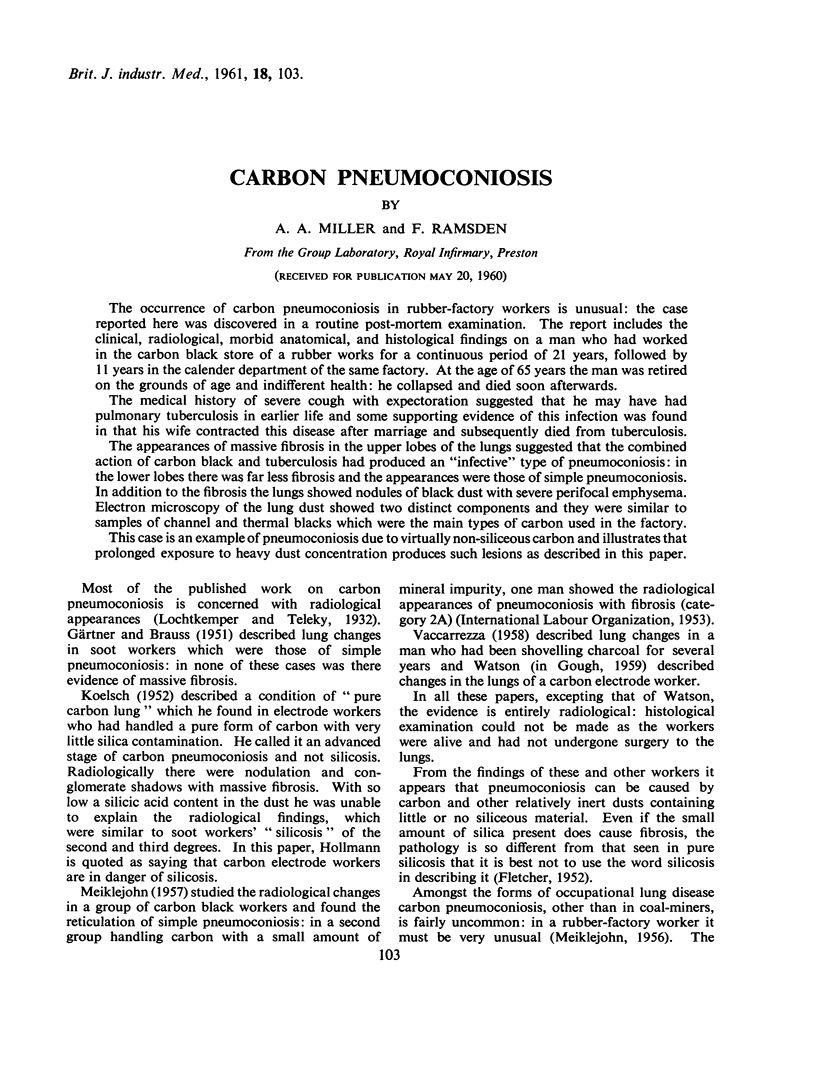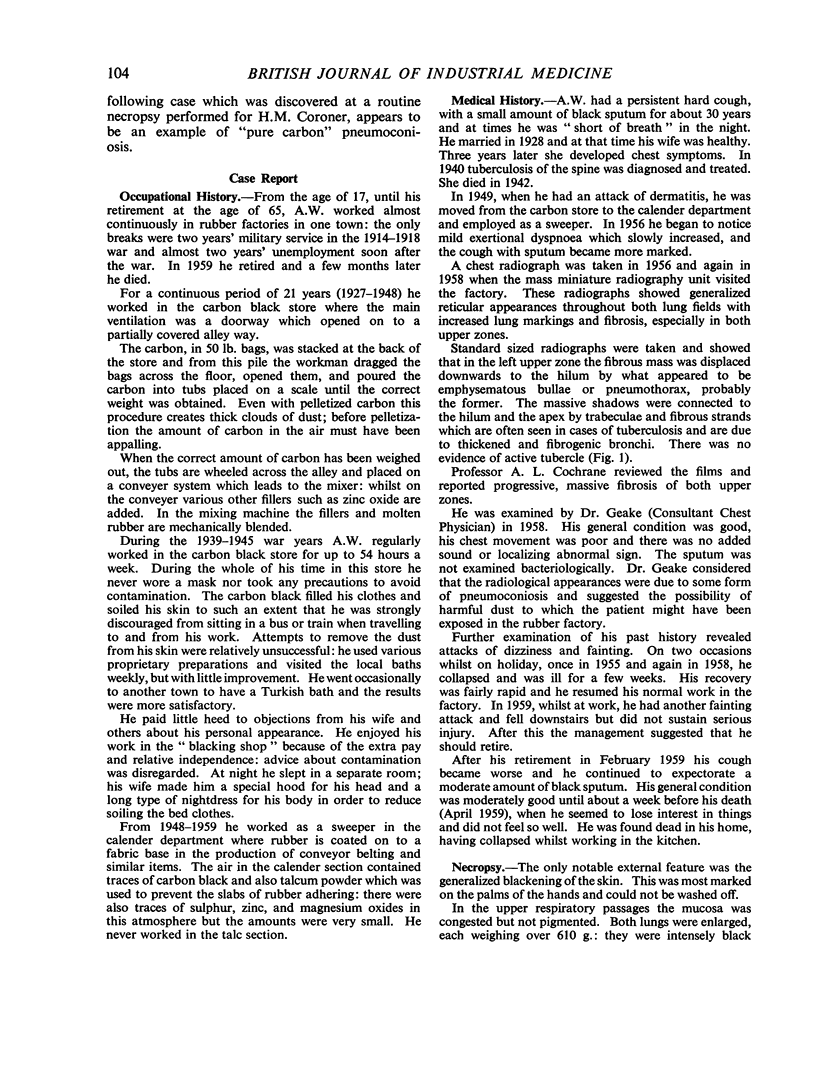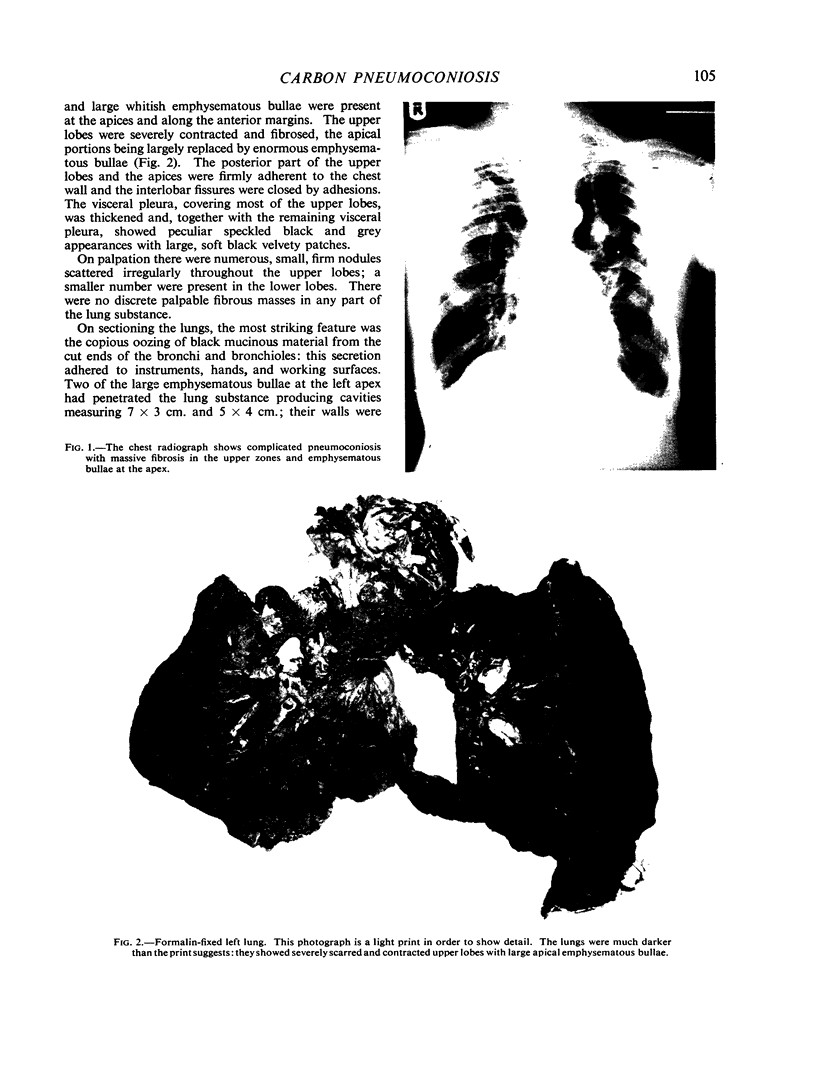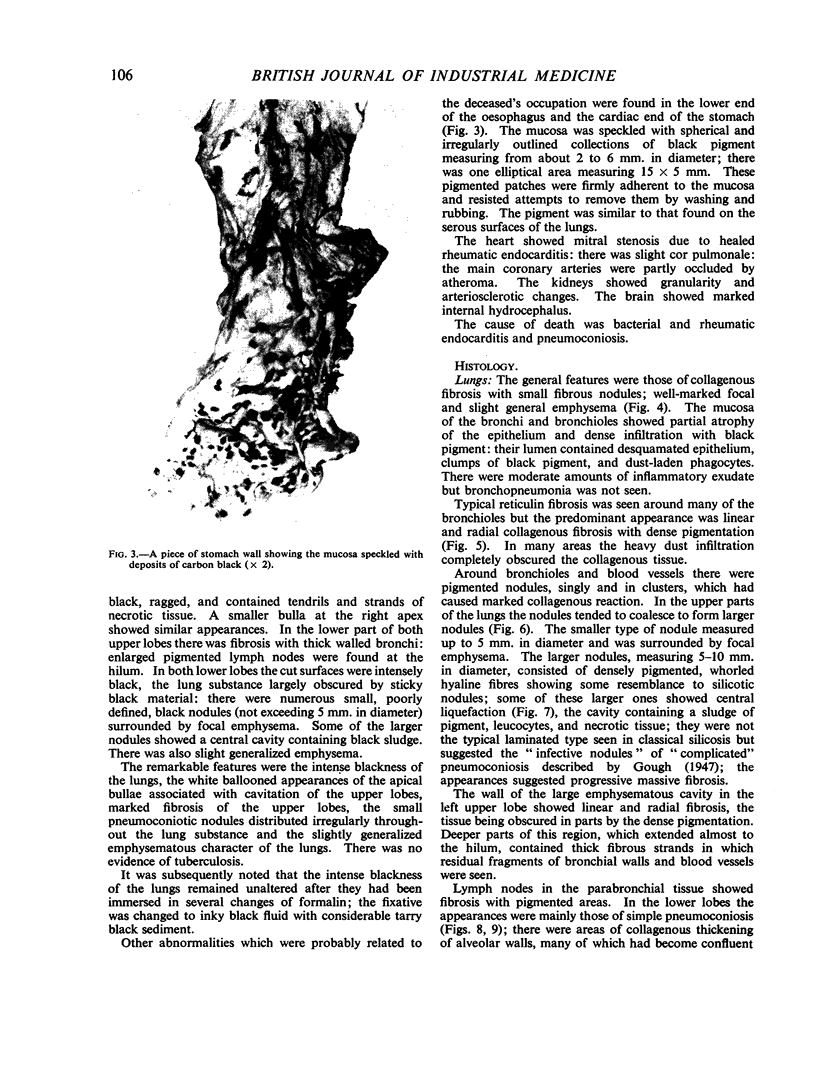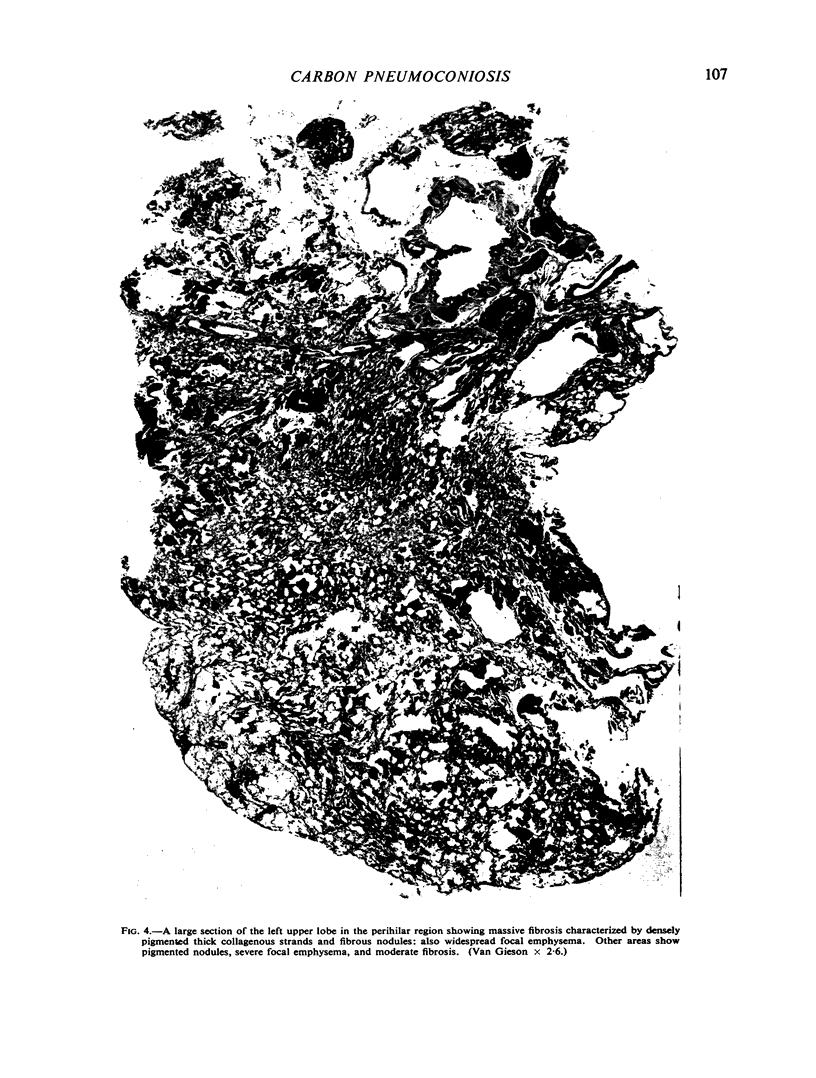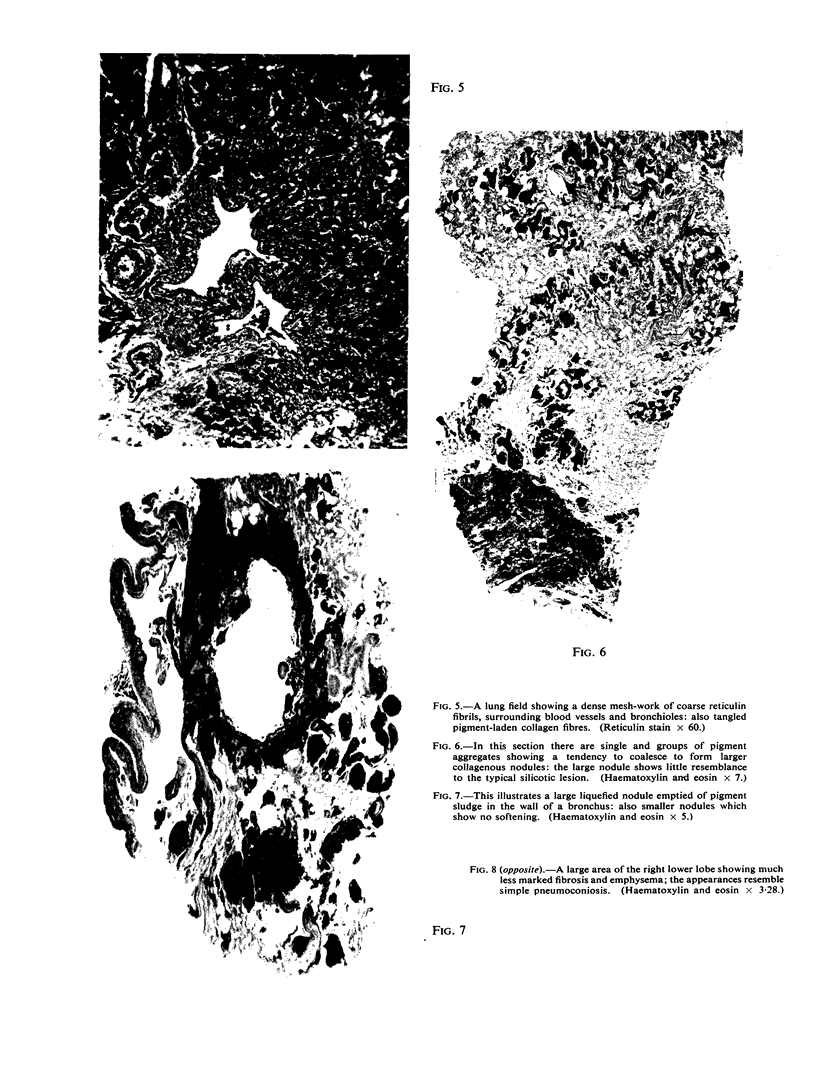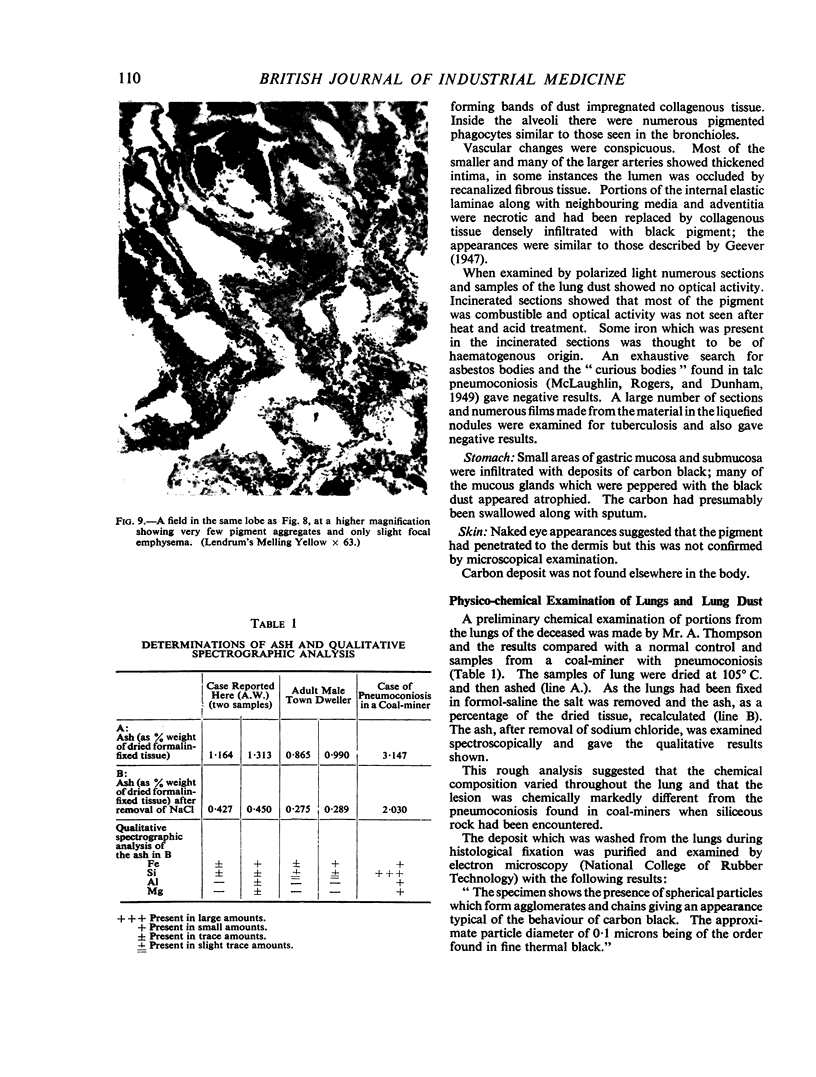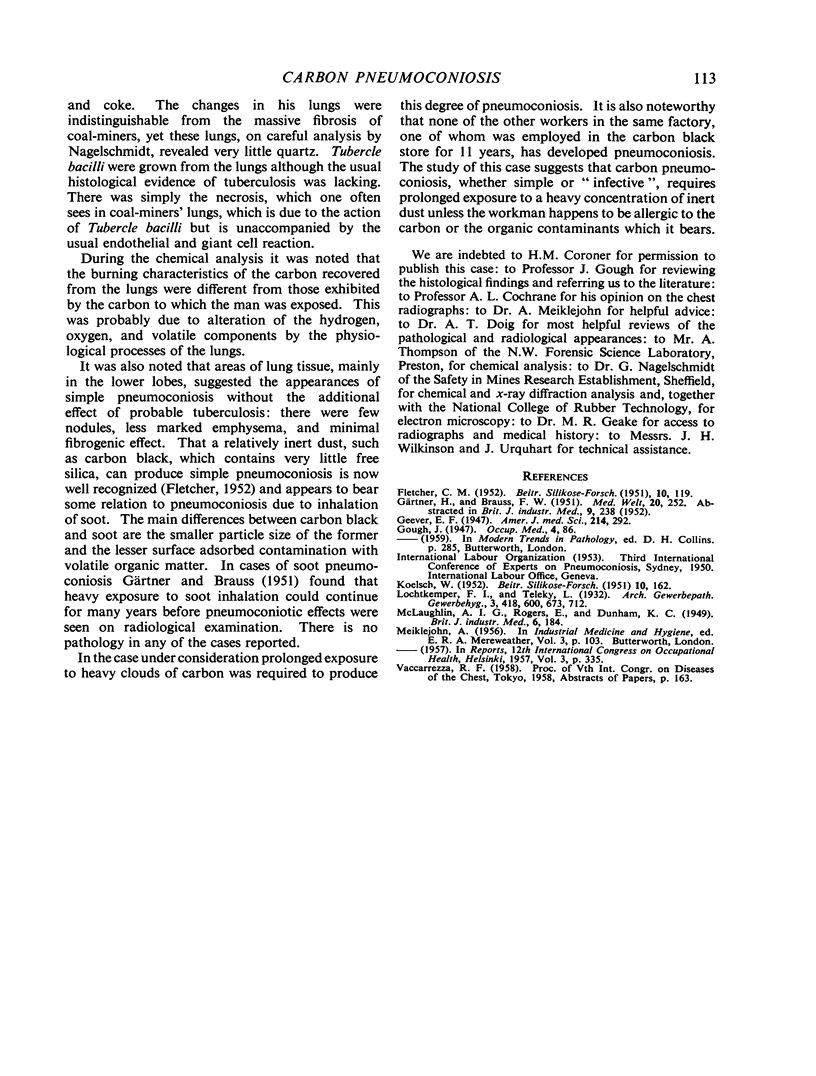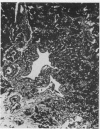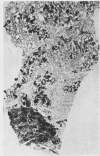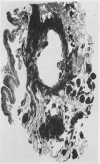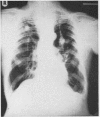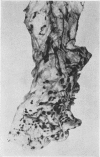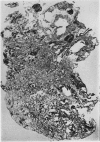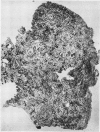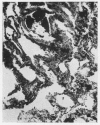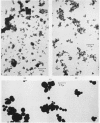Abstract
The occurrence of carbon pneumoconiosis in rubber-factory workers is unusual: the case reported here was discovered in a routine post-mortem examination. The report includes the clinical, radiological, morbid anatomical, and histological findings on a man who had worked in the carbon black store of a rubber works for a continuous period of 21 years, followed by 11 years in the calender department of the same factory. At the age of 65 years the man was retired on the grounds of age and indifferent health: he collapsed and died soon afterwards.
The medical history of severe cough with expectoration suggested that he may have had pulmonary tuberculosis in earlier life and some supporting evidence of this infection was found in that his wife contracted this disease after marriage and subsequently died from tuberculosis.
The appearances of massive fibrosis in the upper lobes of the lungs suggested that the combined action of carbon black and tuberculosis had produced an “infective” type of pneumoconiosis: in the lower lobes there was far less fibrosis and the appearances were those of simple pneumoconiosis. In addition to the fibrosis the lungs showed nodules of black dust with severe perifocal emphysema. Electron microscopy of the lung dust showed two distinct components and they were similar to samples of channel and thermal blacks which were the main types of carbon used in the factory.
This case is an example of pneumoconiosis due to virtually non-siliceous carbon and illustrates that prolonged exposure to heavy dust concentration produces such lesions as described in this paper.
Full text
PDF